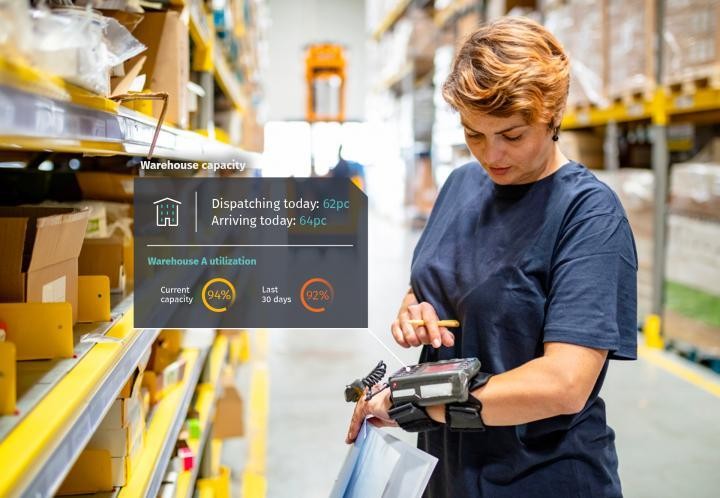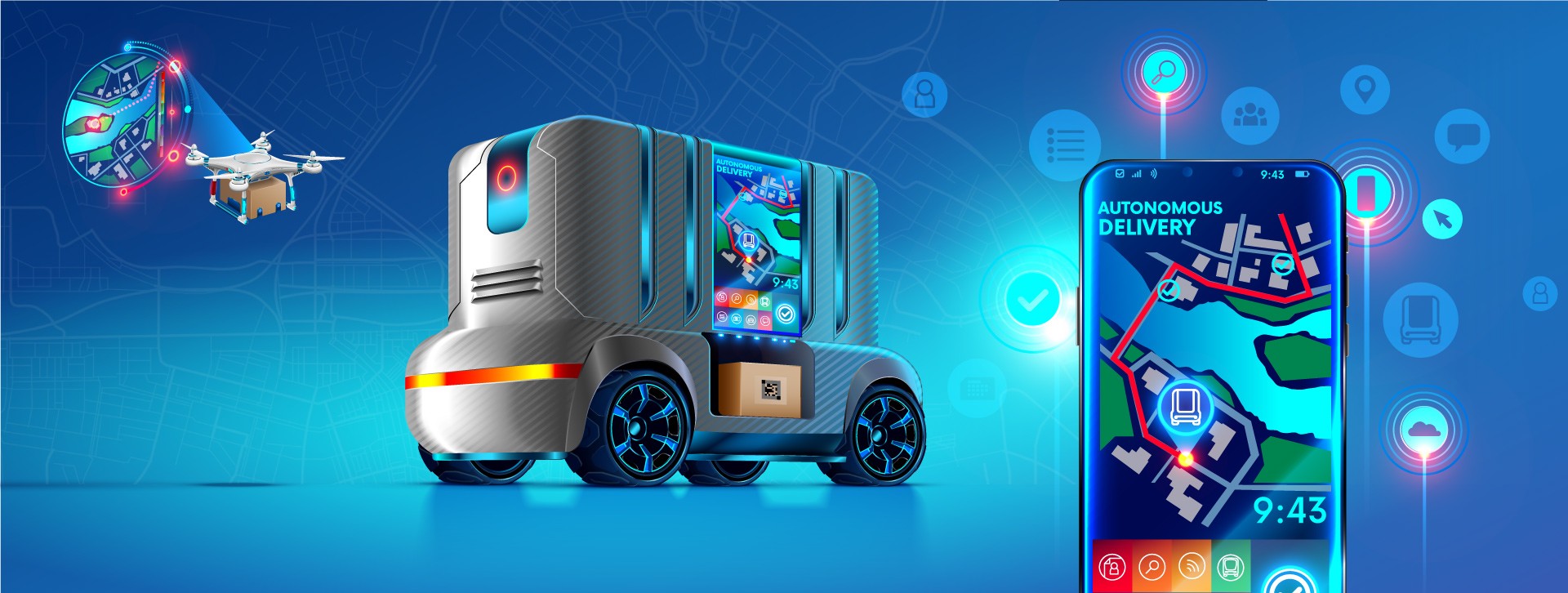Location intelligence helps logistics to continue growth, survive shocks
In an exclusive interaction with the Indian Transport and Logistics News, Nikhil Kumar, country head, India of HERE Technologies, talks about Indian logistics, the importance of location intelligence, solutions provided by Here Technologies and their future plans.

December 12, 2020: Here Technologies is a Netherlands-based company that provides mapping and location data and related services to individuals and companies. With the transport & logistics sector as one of the key focus areas, HERE provides enterprise-grade maps, technical and professional services to companies in the sector.
In an exclusive interaction with the Indian Transport & Logistics News, Nikhil Kumar, country head, India of HERE Technologies, talks about Indian logistics, the importance of location intelligence, solutions provided by Here Technologies and their future plans.
Tell us about the importance of location intelligence in the Indian transport logistics industry.
The logistics industry is critical to almost every other industry we have whether it is manufacturing, supply chain, e-commerce, etc. In other words, the logistics industry is omnipresent, moving essential products, services and now, as we move into the post-Covid-19 era: for vaccine distribution.
However, despite the position it holds, the industry is riddled with challenges around infrastructure maintenance, energy consumption, environmental challenges, safety regulations, etc. The pandemic has further added fuel to fire, by disrupting supply chains, thanks to lockdowns, business shutdowns, remote working models, and social distancing norms. This is where logistics driven by geospatial data and analytics can provide otherwise difficult business insights that can influence the company’s bottom lines.
What is the market potential for the same? How profitable is it?
As per industry estimates, the location-based services market size was valued at $28.95 billion in 2019 and is projected to reach $183.81 billion by 2027, growing at a CAGR of 26.3 percent from 2020 to 2027. The advent of digitalization boosts the need for location-based services (LBS), owing to its capability to offer customized marketing strategy solutions, which, in turn, creates new revenue growth opportunities for players opting for these solutions.
Kindly divide the logistics into different segments like last mile, first mile or fleet, help us to understand the requirements of location intelligence in each and how you serve them?
To put things in perspective, let us consider how location-enabled fleets and logistics can allow businesses to continue growing and survive shocks (pandemic, seasonal or otherwise):
- Optimizing first-mile delivery: For any business and its supply chain, the first mile is important and problems at this stage, are largely unpredictable. Things like loading times, unexpected delays at the customs, or an intermediary centre can cascade into last-mile challenges such as stock-outs, short orders, etc. Innovative location platforms can deliver accurate insights into the availability of closest packaging centres and real-time location tracking mobile apps can offer businesses and logistics vendors complete control over the entire supply chain. While we manage first-mile deliveries, fleet management is an important aspect of the process. Making use of in-vehicle cameras, location tracking technologies, fleet managers can gain insight into operations, real-time traffic, and weather conditions. With customizable mobile solutions embedded in-vehicles that integrate re-routing, geo-fencing, etc., logistics managers can track driver behaviours in different locations to mitigate accident rates and increase driver retention rates.
- Middle mile-delivery: Once the shipments are en-route to their destination, using cloud-based location solutions and automatics clusters, companies can ensure driver safety, route optimizing, keep a check on road conditions and traffic density. Managing shipments at this stage are crucial to ensure deliveries are made on time and any possible delays or issues are sorted out real-time.
- Streamlining last-mile deliveries: Cloud-based location solutions that provide aerial and satellite imagery, high definition maps can help evolve last-mile delivery process as orders get automatically clustered, drivers are empowered to avoid traffic and streamline deliveries. Through predictive alerts, fleet managers can plan efficient delivery routings based on travel time, fuel costs and road tolls, thus optimizing the entire supply chain.
- Transport management systems: Location intelligence tools can also help drivers and fleet managers associate exact location or destination on maps with 2D physical building outlines, thus creating an accurate, precise, intuitive, and engaging navigation experience on road. High precision interactive apps, geo-coordinates can help companies calculate distances and ETA for planned shipments while ensuring drivers and company fleet comply with local regulations.
With the new social distancing norms, companies will need to adopt location-based services to ensure employee safety and business continuity. This means, companies will increasingly need to manage their businesses remotely, which means providing location context to the delivery stages, condition of goods, and ensuring driver safety will become crucial. Additionally, companies can leverage mapping robots to help with indoor mapping of facilities, factory floor mapping, and ensuring packaging and deployments are happening on time.
Location intelligence is thus, becoming an integral part of business processes across industries, and the transport and logistics business is no exception. For the kind of digital transformation the industry is heading toward, location intelligence will only gain more significance from both a customer’s standpoint and business’ perspective.
 By making sense of the world through the lens of location, we empower our customers to achieve better outcomes – from helping a city manage its infrastructure or a business optimize its assets, to guiding drivers to their destination safely.
By making sense of the world through the lens of location, we empower our customers to achieve better outcomes – from helping a city manage its infrastructure or a business optimize its assets, to guiding drivers to their destination safely.
How is HERE Technologies positioned in this market in terms of reach and clients?
When it comes to business-to-business (B2B) location technologies, we are the leading providers of some of the most advanced digital solutions for sectors across transport & logistics, fleet management, supply chain, public sector and automotive among several others. Over the last 30 years, we have steadily built our legacy in mapping technology, across the world and today have the distinction of creating dynamic, three-dimensional maps breathing with layers of information and insights. Our HERE platform has been consistently ranked as the number-one location platform by industry analysts and bodies such as Omdia and Counterpoint Research, well ahead of the competition. Our strengths are our developer reach and partner network, particularly in Asia with Mitsubishi Corp. and Japan’s largest telecom provider NTT, who recently joined as our new investors.
How intelligent is the HERE platform in terms of its tech capability, benefits, and solution?
At HERE, our endeavour is to enable people, businesses, and cities to harness the power of location. By making sense of the world through the lens of location, we empower our customers to achieve better outcomes – from helping a city manage its infrastructure or a business optimize its assets, to guiding drivers to their destination safely. Our robust and cutting edge, deep-tech product portfolio includes:
- Location services products such as geofencing, custom routing
- Industry-leading maps sporting over 900 attributes, powered by millions of data sources
- Fast and accurate global tracking and positioning
- Smart mobility marketplace for fleet and transportation services.
- End-to-end solutions for connected vehicles, in-vehicle infotainment, and autonomous driving
Beyond this, we are constantly looking to expand our association with automakers and spatial technology partners to drive the country’s broader adoption of smart mobility solutions. Some of these key solutions include:
Better navigation through high definition mapping and probe data: We are engaging with our existing partners to add a significant volume of GPS probe data to HERE’s existing traffic capabilities in the country, with improved quality and coverage of traffic maps, with high-end precision. Intelligent mobility solutions enabled by geo-aware data can help identify and solve the challenges, especially prevalent in the transport & logistics sector, on-demand services, and the public sector organizations. With enhanced probe points, HERE can deliver better coverage and quality traffic information, thus, providing a better navigation experience and a reduced ETA for the customers on the roads.
Route optimization: HERE WeGo Deliver is a free route optimization delivery app, for Indian SMEs, and transport and logistics companies to help them implement their own simplified and efficient delivery services during the increased demand amidst Covid-19. HERE WeGo Deliver helps businesses implement their own simplified and efficient delivery service during the Covid-19 pandemic. It allows businesses to plan and dispatch a delivery service without software development or implementation costs. The app optimizes each delivery route and sequence. Drivers can receive their delivery route by email, which automatically opens and populates the delivery route end points in the HERE WeGo mobile app to provide voice-enabled navigation. At a time where deliveries had increased, delivery personnel needed to be managed remotely. Using this app, companies could allot delivery schedules, location, and sequences.
Road safety: When it comes to road safety, we often focus on vehicle telematics, navigation apps, ride-hailing services etc. There is also an important aspect of lane guidance. With solutions such as HERE Lanes, OEMs can leverage location intelligence to enhance a vehicle’s sensors. Users can ensure the vehicle stays on the right lane. For lane guidance, we need to adopt technologies like HD GNSS positioning to help with lane-level navigation. One of our latest road safety solutions has been via our partnership with Intents Mobi. With this solution, our aim is to help save lives that are lost due to speed breakers and potholes on roads. We will be powering Intents Mobi’s newly launched application Intents Go, a fully functional navigation app to find out road surface conditions and alert users as they drive and has the added feature of alerting users of potholes, speed breakers, waterlogging, landslides and much more. Intents Mobi will be also offering Real-Time Traffic data that identifies traffic congestion areas and its reasons by delivering high-quality flow and incident content every minute.
Tell us about your customers. Who are they? What do they want? And how do you help them?
‘Location’ forms the core of our businesses. Our clientele, therefore, includes service-oriented businesses, whose success depends upon on-time and efficient customer management. Our clients are looking for ways that can enable them in infrastructure maintenance, fleet management, first-mile, middle-mile and last-mile delivery, and transport management systems: all of them critical to brand and customer relationship. We empower our customers with enterprise-grade location services built on robust and comprehensive maps, along with tools that improve driver safety by generating routes based on truck size, cargo, and driving experiences. We help enhance the efficiency of the delivery by enabling businesses to track commercial vehicles in real-time to predict possible delays and commute ETAs to operators and customers.
With the help of technologies like geocoding and geofencing, HERE helps businesses pinpoint the geographic coordinates of shipment’s origin and destination with high-level precision and triggers an alert and issues a response when a vehicle approaches pick-up, drop-off, or leaves its planned route. Our solutions consider real-time traffic conditions to calculate ETAs from door-to-door. To help drivers comply with regulations HERE’s turn-by-turn navigation guides truck drivers to the nearest truck stop and reports the truck’s location. Additionally, our solutions enable businesses to gain better visibility of shipment costs by integrating up-to-date and vehicle-specific tolls in the transport management system.
In short, we provide comprehensive mapping content, an integrated suite of solutions, services and development tools and a marketplace for data to solve complex location-based problems- that can impact any company’s bottom line.
Some of our marquee global clients and partners in the transport and logistics sector are- Verizon Connect, GeoTab, RouteSmart, Omnitracs, NexTraq and GPS Insight.
 Technologies like Artificial Intelligence (AI), Internet of Things (IoT), Machine Learning (ML) and Robotics will become a more common affair.
Technologies like Artificial Intelligence (AI), Internet of Things (IoT), Machine Learning (ML) and Robotics will become a more common affair.
Particularly after Covid-19, e-commerce is booming. Tell us about your relationship with online vendors and how do you think the new developments will affect your business?
Covid-19 upended global businesses and economies in many ways. The e-commerce industry was no different. In the pre-pandemic days, consumers would confidently purchase goods online, without worrying about when and how it would be delivered. With Covid-19, global supply chains disrupted, transportation ceased, and the demand-supply chasm widened. Consumers struggled to stock essential purchases. Paradoxically, regional businesses with their homegrown supply chains and local customer outreach adopted a swift and localized response in the style of: ‘think global, act local.’ The regional nature of the pandemic meant that these businesses could service the universal customer needs, in a very specific geographical and spatial context. That is true now and will be so even more, in the coming future.
In this new normal, e-commerce businesses and online vendors are already relooking at their business models, adopt swift measures and realign their supply chain strategies, if they want to stay relevant and in businesses. Increased consumer demands can put supply chain of businesses and e-tailers in a tough spot, causing various hiccups such as running out of inventory, logistical frictions, in-storage space, etc. More importantly, the Covid-19 imposed social distancing and restrictions are forcing most businesses, to consider scaling their operations and securing human personnel right through the first mile, to middle-mile to last-mile connectivity. This is where location technologies can come to the rescue of businesses looking to streamline their seasonal supply chains.
To give you an example, we have partnered with TCS on their Digifleet solution to help clients build more efficiencies and cost optimization in their current fleet operations. TCS has taken HERE location services, routing, traffic and fleet telematics APIs and has developed fleet/driver UX dashboards and analytics as an E2E fleet management solution. We have similar solutions in intelligent transportation networks, smart metering and location-driven network planning by partnering with leading Sis and ISVs.
Besides this, we have also launched a new tech solution- the HERE WeGo Deliver app to help small and medium Indian enterprises with their deliveries. HERE WeGo Deliver is a free route optimization delivery app, for Indian SMEs, and transport and logistics companies to help them implement their own simplified and efficient delivery services during the increased demand amidst Covid-19. HERE WeGo Deliver helps businesses implement their own simplified and efficient delivery service during the Covid-19 pandemic. It allows businesses to plan and dispatch a delivery service without software development or implementation costs. The app optimizes each delivery route and sequence. Drivers can receive their delivery route by email, which automatically opens and populates the delivery route end points in the HERE WeGo mobile app to provide voice-enabled navigation. At a time where deliveries had increased, delivery personnel needed to be managed remotely. Using this app, companies could allot delivery schedules, location, and sequences.
How well funded is Here Technologies? Are you looking for fundraising right now?
When you look at the number of investors we have had over the course of the last few years, we have widen our coverage from mainly automotive companies (Audi, BMW, Daimler) to include companies such as Bosch, Intel, Pioneer and Continental, we have continued to grow from strength to strength. With the latest investment from Mitsubishi Corp and NTT, we are extremely well placed to further diversify beyond automotive, which is important given the appeal and necessity of location technology across geographies and industries.
What we could expect from Here Technologies in the next 5 years in terms of expansion, new solutions and revenue?
With the new remote working models, transport and logistics companies will witness a dramatic shift in automation of business processes. Technologies like Artificial Intelligence (AI), Internet of Things (IoT), Machine Learning (ML) and Robotics will become a more common affair. Given the restrictions on mobility and social distancing norms, companies will need to find ways to ensure business continuity in the event of another global crisis similar to this pandemic. Thus, the industry is likely to explore autonomous vehicle solutions to deliver shipments and monitor them remotely to ensure business continuity and safety of employees.
The transport & logistics sector is one of the key focus areas for us at HERE. We provide enterprise-grade maps, technical and professional services to companies in the sector. Like most sectors, even this one was impacted negatively by the pandemic and subsequent nation-wide lockdowns. The need for technological assistance for business continuity became crucial and among the emerging technologies, location intelligence and spatial technologies were crucial for fleet management, first and last-mile optimization, scheduling deliveries based on driver locations, route optimization and driver safety, among other things.

Libin Chacko Kurian
Assistant Editor at STAT Publishing Group, he has eight years of experience in business journalism covering food & beverage, nutraceuticals and now logistics. His current passion is to understand the nuances of global supply chains and their current turmoil. Outside work, he is also interested in philosophy, history, birding and travelling. Mail him: libin@statpublishinggroup.com Follow on LinkedIn


